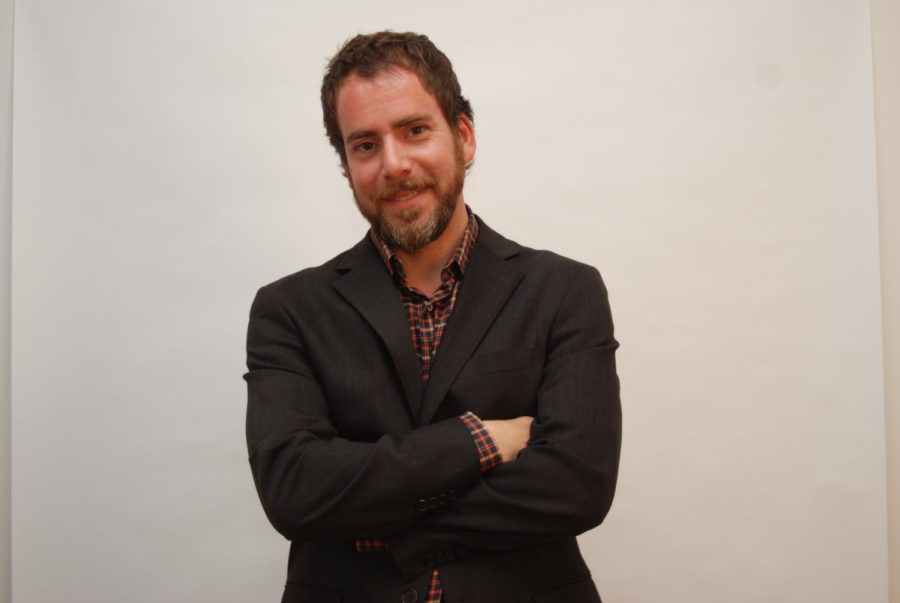Q&A with alumnus John Toya
Architect John Toya graduated from Iowa State in 1993 and is now a partner at Ike Kligerman Barkley Architects, a prestigious firm that recently released a book.
September 16, 2010
John Toya is a partner at Ike Kligerman Barkley Architects. The firm recently released a book showcasing its best work and are touring the country to promote it.
What year did you graduate? What did you get your degree in?
Bachelor of Architecture, 1993
Did you start out in that program or did you have other interests?
I started out in the pre-business program at Northern Illinois University and transferred to Iowa State to do the one-year pre-architecture program in one semester.
How did you get interested in that field?
My father was an architect. It colored my view quite a bit growing up, especially in Chicago. I was pushed into business, but it didn’t take; I had [architecture] in my blood, I guess.
What activities and organizations were you involved in at Iowa State?
Given my start at Iowa State of “catching up,” I didn’t get too involved right away. I was with Phi Kappa Theta fraternity for a while and was on the Design Committee.
What is your favorite thing about Iowa State?
I loved the intimacy and vibrancy of the design community most of all. Laying in Central Campus under the Campanile and listening to carillon concerts was a big luxury.
Describe your career path.
I was lucky to be employed in the early ’90s after school. It was a recession similar to the one we are in now. I first worked for Hancock and Hancock in Chicago, the place that I had a job during my last few summers at Iowa State.
After a few years of learning and loyalty, I started looking in Chicago but was curious about other places. I had a few offers in town but used a vacation to New York as an opportunity to schedule an interview. I was offered a job at Ike and Kligerman Architects and moved three weeks later.
I didn’t expect at that time that my “foot-in-the-door job” would become a wacky fun ride of opportunities. I was among the first associates the firm took on, and — after the “ordination” of Joel Barkley in 1999 and creation of Ike Kligerman Barkley Architects — the first partner.
I guess good things come to those who wait and to those who invest. Once we landed a few jobs in the [San Francisco] Bay area, I offered to open a satellite branch of IKBA. The other partners ultimately agreed it made sense. I’ve been running the SF branch since 2008. It’s been a nice move.
What has been your proudest accomplishment?
I have to say, my proudest moment was attending an elegant cocktail party and recital at the first house that I designed “soup to nuts.” It was a magical evening of smiles and compliments, and I was awash with pride. The recent completion of the Stanford Institute of Economic Policy Research is perhaps a greater accomplishment. It’s certainly a greater contribution. But even the dedication ceremony wasn’t quite as sweet as that first house.
Several of my projects were included in the IKBA houses book, including the Dana Loft and the house in Wilton mentioned before. Considering more than 300 projects were contending for 21 slots in the book, three or four projects isn’t bad.
What do you like most and least about your job?
I love solving problems on various scales either individually or with smart, fun colleagues, craftsmen and contractors. I love a client whose expectations are in line with his budget and knows what he wants. I don’t like business trips to beautiful places that don’t afford me any time to enjoy the beauty. I despise paperwork.
What have been some of your favorite projects you’ve worked on with Ike Kligerman Barkley Architects?
Dana Loft, a modern loft in Greenwich Village that required a thousand details to achieve one simple design idea; a house in Wilton, Conn., which was an addition to a late ’70s pyramid-shaped house; The Living Well Center, a community/recreation building in Asheville, N.C., which was on grounds of the Biltmore Estate; and SIEPR, the Stanford building, which we just completed and has been incredibly well-received.
Where do you get inspiration for the projects you do?
Our office is not afraid to dive into history. We joke that as long as they’re dead, we’ll reinterpret anyone’s work. There is a culture of sharing our ever-changing historical obsessions; these inform our work. It is fun to have conversations with history and not ignore one’s own time. Currently, I’m reinvestigating the Novacento movement in Italy — facist architecture — which we studied on our semester in Rome back in ’91.
What advice do you have for college students, particularly those in your major?
I would say don’t be afraid to explore beyond your major during or after school. I am proud of my career but wish I did a bit more independent travel and a few more odd jobs to color my experience. That said, I think that a good group of talented people is an opportunity to be exploited and invested in. If you’re in such a spot, try to make your mark. Play well with others, and don’t be afraid to have fun. Fun is contagious, and as long as work is competent and timely, no one is going to fault you for making work a good time.
What is your best memory of college?
Late nights in studio, which architects are famous for, were a wonderful opportunity for self expression. People get loopy in the wee hours and all is forgiven. The community created of the dedicated few was precious to me. My 4 a.m. walks home through campus fueled an ongoing love of late-night urban walks. One walk home stands out: It was the night of an ice storm. Sadly, Iowa State lost a lot of trees, but I can’t express how gorgeous Central Campus was at 4 a.m. with each little branch covered in ice.
What is one thing you know now you wish you would’ve known while you were in school?
How to actually stop walking while smelling the roses. How it will all work out if you have a good head on your shoulders.
The book “Houses” is available online through Amazon.







